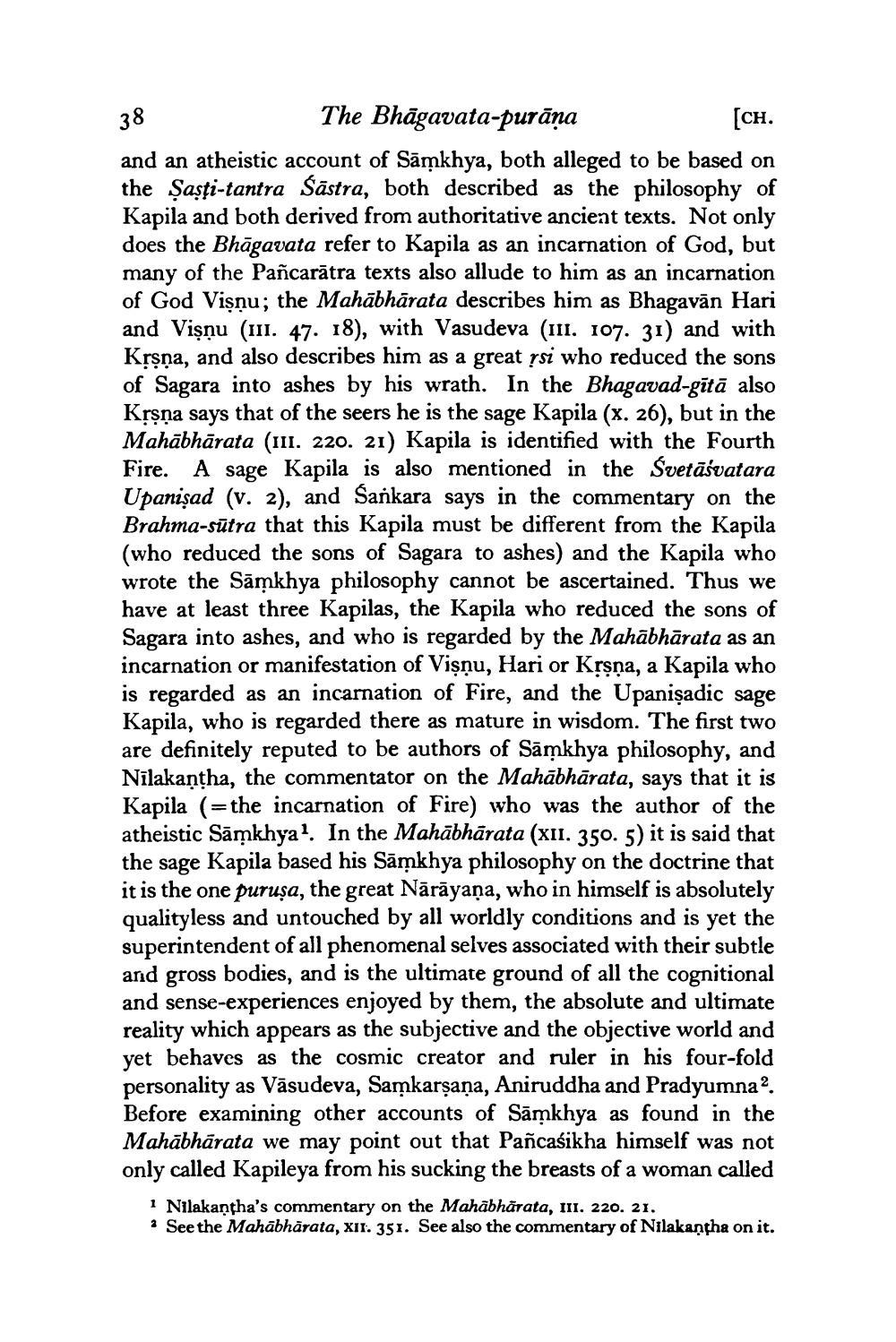________________
The Bhāgavata-purāṇa
[CH.
and an atheistic account of Samkhya, both alleged to be based on the Sasti-tantra Sastra, both described as the philosophy of Kapila and both derived from authoritative ancient texts. Not only does the Bhāgavata refer to Kapila as an incarnation of God, but many of the Pañcarātra texts also allude to him as an incarnation of God Visņu; the Mahābhārata describes him as Bhagavan Hari and Visņu (III. 47. 18), with Vasudeva (III. 107. 31) and with Kṛṣṇa, and also describes him as a great rsi who reduced the sons of Sagara into ashes by his wrath. In the Bhagavad-gītā also Kṛṣṇa says that of the seers he is the sage Kapila (x. 26), but in the Mahabharata (111. 220. 21) Kapila is identified with the Fourth Fire. A sage Kapila is also mentioned in the Svetasvatara Upanisad (v. 2), and Sankara says in the commentary on the Brahma-sūtra that this Kapila must be different from the Kapila (who reduced the sons of Sagara to ashes) and the Kapila who wrote the Samkhya philosophy cannot be ascertained. Thus we have at least three Kapilas, the Kapila who reduced the sons of Sagara into ashes, and who is regarded by the Mahābhārata as an incarnation or manifestation of Visņu, Hari or Kṛṣṇa, a Kapila who is regarded as an incarnation of Fire, and the Upanisadic sage Kapila, who is regarded there as mature in wisdom. The first two are definitely reputed to be authors of Samkhya philosophy, and Nilakantha, the commentator on the Mahabharata, says that it is Kapila (=the incarnation of Fire) who was the author of the atheistic Samkhya1. In the Mahābhārata (XII. 350. 5) it is said that the sage Kapila based his Samkhya philosophy on the doctrine that it is the one puruşa, the great Nārāyaṇa, who in himself is absolutely qualityless and untouched by all worldly conditions and is yet the superintendent of all phenomenal selves associated with their subtle and gross bodies, and is the ultimate ground of all the cognitional and sense-experiences enjoyed by them, the absolute and ultimate reality which appears as the subjective and the objective world and yet behaves as the cosmic creator and ruler in his four-fold personality as Vasudeva, Samkarṣaṇa, Aniruddha and Pradyumna2. Before examining other accounts of Samkhya as found in the Mahabharata we may point out that Pañcaśikha himself was not only called Kapileya from his sucking the breasts of a woman called
38
1 Nilakantha's commentary on the Mahabharata, III. 220. 21.
2 See the Mahabharata, XII. 351. See also the commentary of Nilakantha on it.




